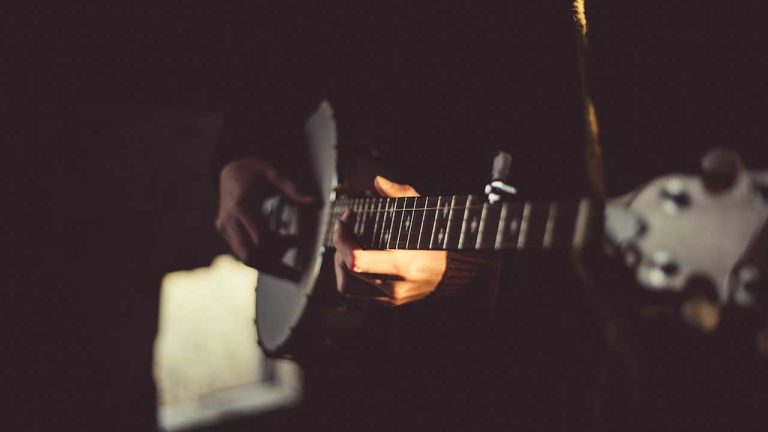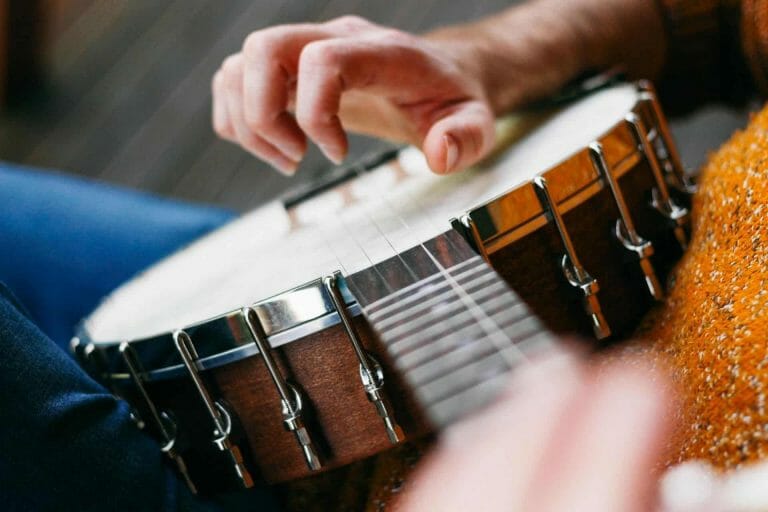Should I Learn Banjo or Guitar?
Folkstrings.com is reader-supported. When you buy through links on our site, we may earn a small commission.
There are many stringed instruments musicians love to play. With so many options, it can sometimes be a bit confusing deciding which one to attempt to master next.
Although there are some similarities, the banjo and guitar are worlds apart in design and playing style. If you are having trouble deciding which one to get started on, allow this information to help.
Guitars are made with six strings that are constructed of steel, though you will see some Nylon strings on guitars.
Banjos have five strings that are made of metal, and the gauge of the strings is typically lighter than on the guitar.
The necks of both instruments also differ. Banjos have a slimmer neck than guitars, which is a factor that comes into play on the difficulty of playing each instrument.
There is also a profound difference in the way the two instruments sound, even to untrained ears. The banjo has a high-pitched sound, whereas the guitar has a deeper and richer sound.
Table of Contents
- Is the Banjo Easy to Learn?
- Is banjo harder than guitar?
- What Is the Best Way to Learn the Banjo?
- How Do You Tune a Banjo?
- Should I Learn Banjo or Guitar? – Conclusion
Is the Banjo Easy to Learn?
One of the biggest misconceptions regarding the banjo is that it is difficult to play. In fact, this five-stringed instrument is one of the easiest to learn.
Banjos are smaller than many stringed instruments. They are easy to hold and strum.
With just a couple of chords, you can learn and begin playing a wide array of songs on the banjo.
Although musicians could stop there and experience full enjoyment, learning different fingerpicking styles takes playing the banjo to a whole new level.

Learning various finger-picking styles takes time, but is worth the effort. It allows you to play differing melodies that add volume to a song.
Banjos are ideal for children to learn as a first instrument. Because of their small hands, this instrument is much easier to handle than some larger stringed instruments.
Is banjo harder than guitar?
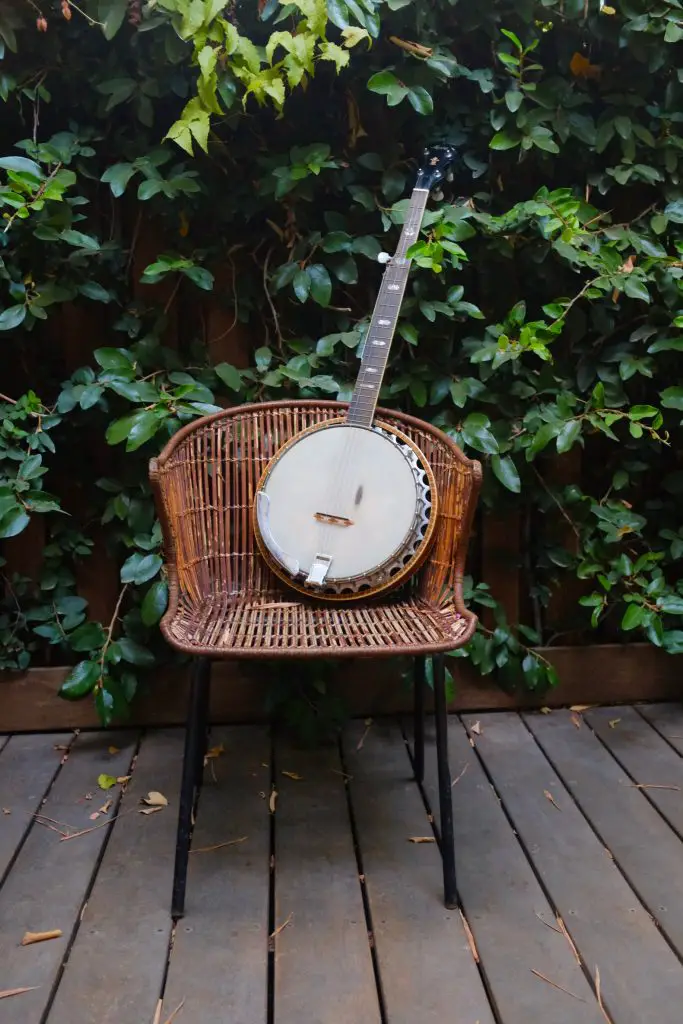
Most musicians agree that the banjo is an easier instrument to learn than the guitar.
It is important to note that a banjo’s strings are much lighter in gauge than a guitar’s, making it easier to press them.
Although there are different types of banjos, the five-string is by far the most popular.
Another reason the banjo is easier to learn than the guitar is it is an open G instrument.
This means you can play the G chord without pressing down on any of the strings.
When it comes to playing a G on the guitar, you must have a fairly strong hand and know a complex fingering style.
Although playing the banjo is easier than guitar, this does not leave the banjo without a learning curve.
As with any instrument, it takes time and practice to be able to master the banjo.
But, if you love folk music, the banjo is undoubtedly an instrument that will interest you.
Consider the following reasons why so many musicians believe the banjo is much easier to play than the guitar.
· Because the neck of the banjo is much slimmer, it is easier to fret the chords on a banjo.
· The gauge of the strings is thinner, making it less painful to play the banjo while waiting for your fingers to toughen.
· Because the G is tuned open, new musicians can play their first chord without even pressing the strings. Banjos are tuned as follows: G, D, G, B, D.
· The banjo can also be used to play a wide array of music styles. Do not believe the misconception that says that the banjo can only be used for folk and bluegrass. Today, some musicians are using this instrument in all styles of music, including rock, blues, and jazz.
What Is the Best Way to Learn the Banjo?
The banjo is becoming a more popular instrument than ever before, allowing people of all ages to take up interest.
Thankfully, there are now many tools available to help people learn the banjo that make learning engaging and fun.
If you are interested in learning this instrument, consider the following tools.
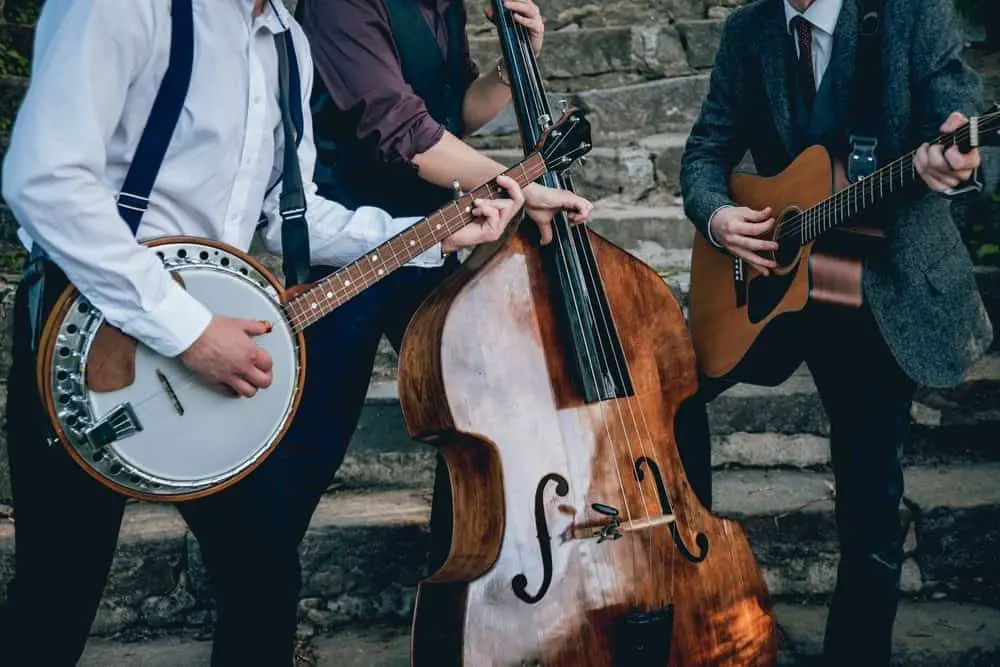
1. Find a local instructor. Working with a teacher can help to keep new banjo players motivated. A teacher will help you start on the lowest levels and work your way up until you begin to play fluently. Local lessons are typically affordable for most new musicians.
2. If you begin playing a five-string banjo, you will find many books that can be helpful. Visit your local library or a bookstore to check out the selection and begin learning techniques that will make playing the banjo much easier.
3. Many online teaching resources can be useful in helping people learn to play. Research carefully and choose those sources with the best reviews, so you can be sure you are using the right resources.
4. Local jams are also a good way to get started playing the banjo. No matter your skill level, these jam groups are typically welcoming because they love seeing new faces show. By playing with others, you will gain beneficial pointers that will help you begin to grow as a musician.
It is best to get started learning banjo by simply practicing strumming. Remember, the banjo is an open G instrument, so you can play this chord and strum away, without ever fretting.
Once you get the hang of strumming, you can start to learn chords. The chords on a banjo are not difficult to master. For instance, this is how you play a C chord on a banjo.
· Use your middle finger to fret the 4th string at the second fret.
· Leave the 3rd string open.
· Use your index finger to fret the 2nd string at the first fret.
· Use your ring finger to fret the 1st string at the 2nd fret.
To help you remember which string is which, simply remember this:
If you are holding your banjo normally, the 5th string is the short string that is closest to you. The 1st string is the last, the one farthest from you.
As you begin to practice the banjo, your love for it will grow.
Unfortunately, most musicians do lack inspiration from time to time and need a little encouragement to keep reaching for their goals.
If you need some inspiration, consider the following.
One tiny step at a time can lead to big improvements in your playing ability.
· Choose to learn a single strum pattern, roll pattern, or clawhammer movement. If you look at the big picture, it gets overwhelming, but learning a small step will keep you motivated.
· Once you have chosen one from above, learn to play it with your eyes closed. Keeping your eyes closed will help you to remember where the strings are located, so you can eventually play without looking while playing a song.
· Next, learn a new two-finger chord and master it. Use it with different strumming patterns and see what music you can create.
· Next, learn a three-finger chord. Then, start to practice your three-finger chord using only two fingers and playing it open. Just let the sound flow.
· Learn a single four-finger chord. Practice playing it with two fingers, three fingers, and open.
How Do You Tune a Banjo?
Tuning a banjo is easy, though there are different kinds of banjos, and they are all tuned differently. The most common type of banjo is a five-string.
With a five-string banjo having an open G, you will tune the strings as follows: G, D, G, B, D.
If you are new to playing the banjo, you may not feel comfortable tuning it by ear at first.
Many new musicians use a tuner to help them tune each string perfectly. As you grow accustomed to how the pitch sounds with each string, it will become easier to tune by ear.
As they say, practice does make perfect, whether you are learning to tune your banjo or learning to play a new chord. With time, you can become a banjo master.
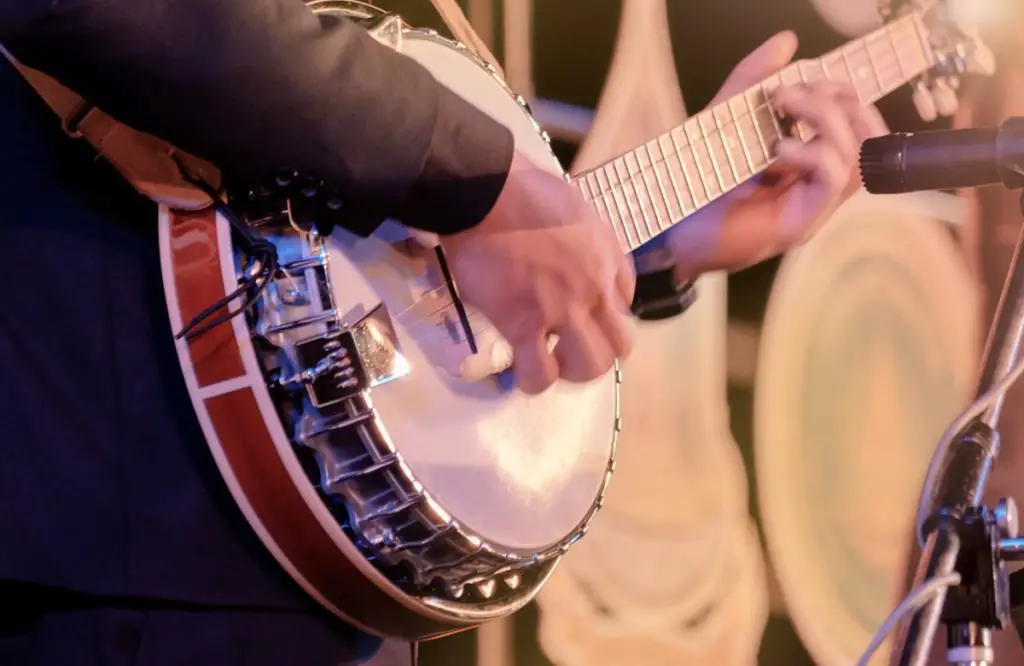
Should I Learn Banjo or Guitar? – Conclusion
The banjo is a fun and easy instrument to learn to play.
As with any instrument, it is going to take time for you to learn all the chords and play freely.
It is recommended new banjo musicians start by strumming their banjo without fretting. With the open G, you can create a lot of beautiful music right from the very beginning.
Do not be afraid to experiment with strumming styles and make sure you become proficient in tuning your banjo properly.
Even if you never master the banjo like Earl Scruggs, you will still find it to be an enjoyable instrument to learn to play.
Author Profile
-
Daniel Johnstone is an English writer with a love for stringed instruments from around the world.
He shares his love for these instruments through his writing for folkstrings.com, a website dedicated to all things related to folk string music.
Daniel's passion for music started at a young age, and he has since become an accomplished musician, playing guitar, cavaco, and recently, the harp.
His dedication to learning and sharing his knowledge of stringed instruments is evident in his insightful and engaging blog posts. Whether you're a seasoned musician or a beginner, Daniel's writing is sure to inspire and entertain you.
When he's not playing music or writing, you can find Daniel exploring new instruments and seeking out new sounds to share with his readers.
Latest entries
 AutoharpApril 4, 2024What Is the Autoharp Made Of: Exploring Its Materials and Craftsmanship
AutoharpApril 4, 2024What Is the Autoharp Made Of: Exploring Its Materials and Craftsmanship AutoharpApril 4, 2024Is Autoharp Easy to Play? Unveiling the Truth for Beginners
AutoharpApril 4, 2024Is Autoharp Easy to Play? Unveiling the Truth for Beginners AutoharpApril 4, 2024What Is an Autoharp Worth? Your Guide to Pricing and Value
AutoharpApril 4, 2024What Is an Autoharp Worth? Your Guide to Pricing and Value AutoharpApril 4, 2024Are Autoharp and Zither the Same Thing? Unraveling String Instrument Myths
AutoharpApril 4, 2024Are Autoharp and Zither the Same Thing? Unraveling String Instrument Myths
Affiliates:
This post may contain affiliate links that at no additional cost to you, the site may earn a small commission. We only recommend products we would use ourselves and all opinions expressed on this site are our own.
Accuracy Advice:
While we strive to provide up-to-date and accurate information, the content in this article may not reflect the most current research or medical guidelines. We encourage readers to do further research and consult with professionals for more personalized advice.
Our Recommendations:
The products and services mentioned in any of our articles are recommended based on our independent research and personal experience. We are not sponsored by any company. We aim to suggest products and services we believe are of high quality and could be beneficial to our readers.





